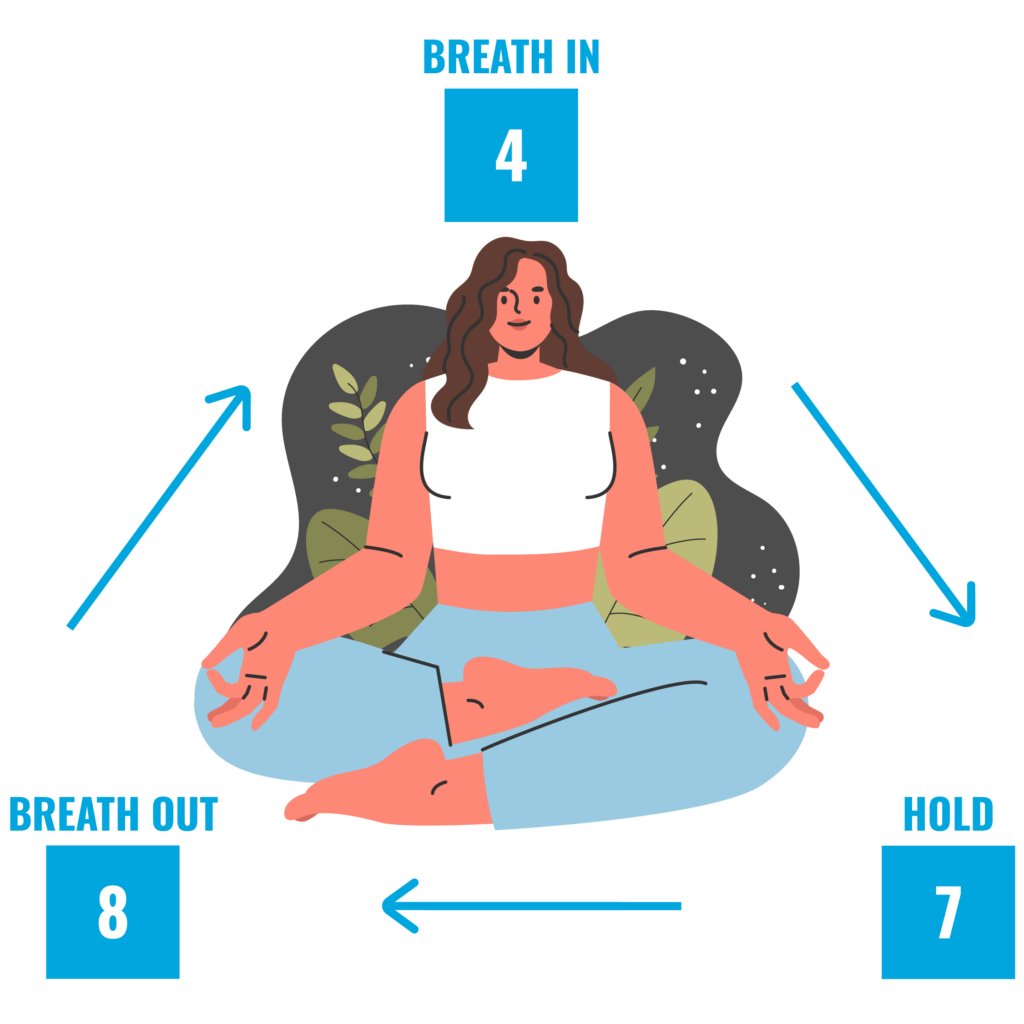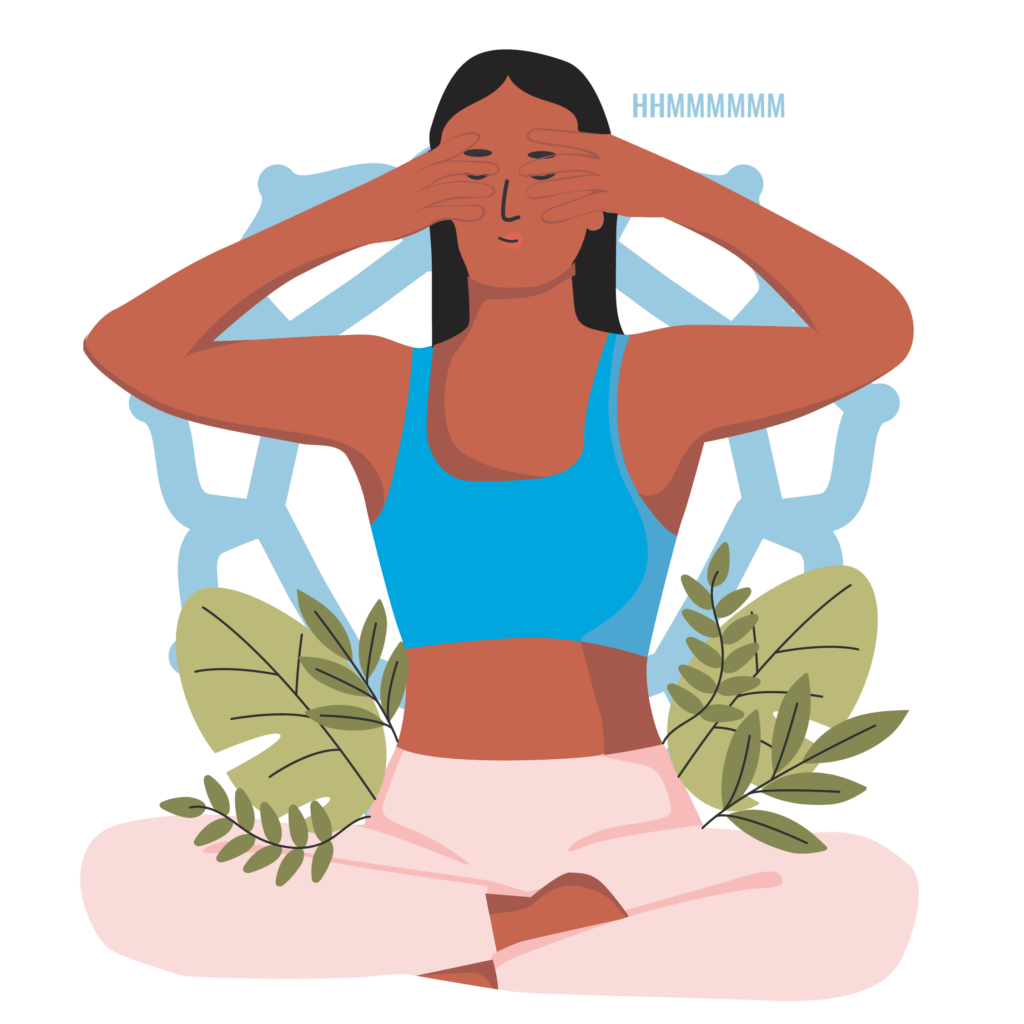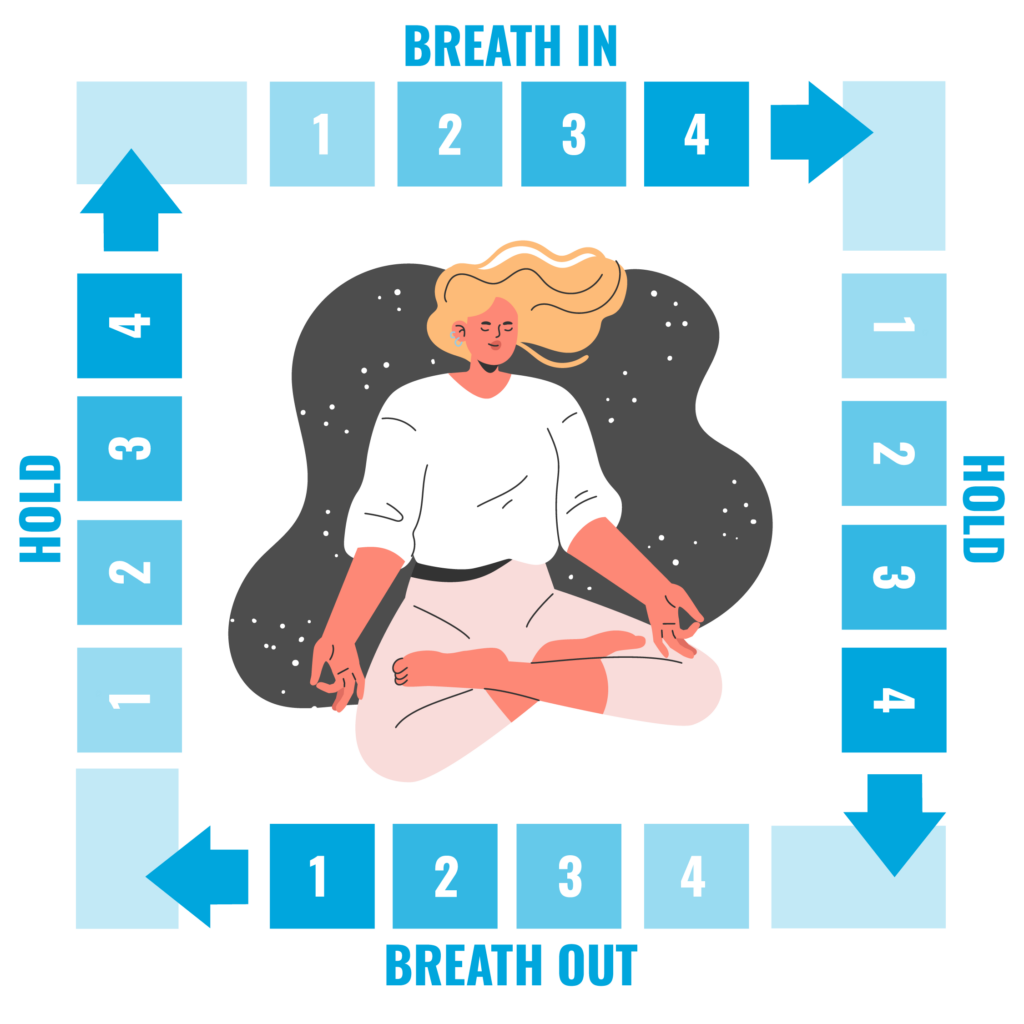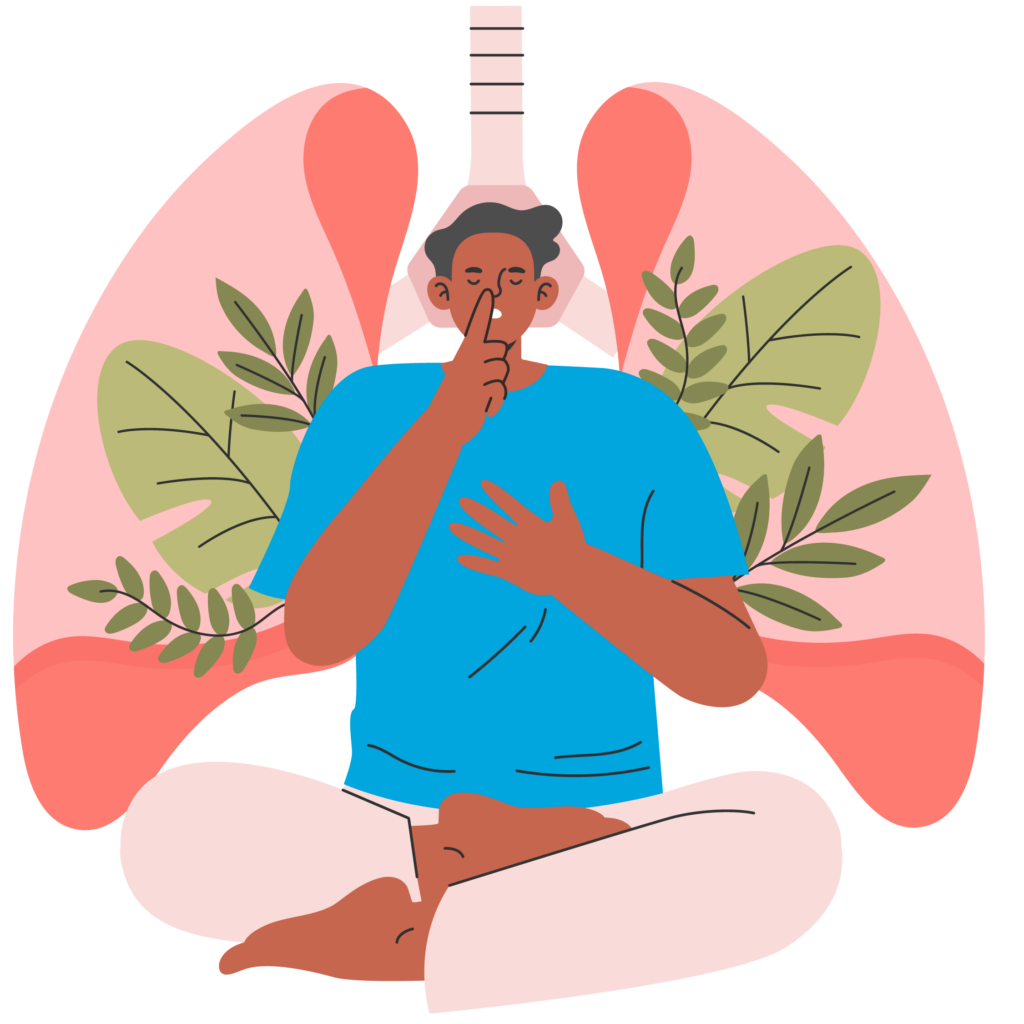Breathwork is a simple yet powerful practice that can help reduce stress, improve energy, and even boost your immune system. Whether you’re new to breathwork or looking to deepen your practice, we’ll explore what breathwork is, the science-backed benefits, and some of the best methods for beginners and seasoned practitioners.
What is breathwork?
Breathwork refers to various breathing exercises to improve mental, emotional, and physical health. These exercises focus on controlling the breath to achieve different outcomes, such as relaxation, increased focus, or emotional balance. Breathwork has roots in ancient practices like yoga and meditation, but it’s also supported by modern science. Techniques can vary from slow, deep breaths to rapid inhaling and exhaling patterns, and they can be done anywhere, making breathwork a flexible tool for improving overall well-being.
5 science-backed benefits of breathwork
1. Reduces stress and anxiety
Breathwork has long been used as a tool to reduce stress and calm the mind. It works by engaging the parasympathetic nervous system, which is responsible for relaxing the body after a period of stress. Shifting the focus to your breath allows your body to slow down and disconnect from physical and mental stress triggers.
The science: A 2017 study published in Frontiers in Psychology found that slow, deep breathing exercises reduce cortisol levels, the hormone related to stress. Another study from Science Direct revealed that breath-focused interventions significantly decreased anxiety symptoms in participants, making breathwork a promising approach for stress management.
Try this: Box breathing is an effective technique for reducing stress. It involves inhaling for a count of four, holding the breath for four seconds, exhaling for four, and holding again. This cycle calms the nervous system and can be done anywhere.
2. Improves energy and boosts immunity
Practicing breathwork can help improve oxygen flow throughout the body, boosting energy levels and promoting better immune function. Oxygen reaches the cells more efficiently with deeper, more controlled breathing, enhancing the body’s natural defenses.
The science: Research shows that breathwork can improve circulation and increase oxygen intake, which helps detoxify the body and boost energy. A study from BMC Complementary Medicine and Therapies suggests that certain breathwork techniques enhance physical health outcomes by improving immune functioning and managing pain.
Try this: Alternate nostril breathing, or Nadi Shodhana, is a yogic technique that increases energy levels by balancing oxygen intake through each nostril. This practice also calms the mind and helps the body feel more energized and focused.
3. Lowers blood pressure
One of breathwork’s lesser-known but highly impactful benefits is its ability to lower blood pressure. Slow, deep breathing triggers the parasympathetic nervous system, leading to a decrease in heart rate and relaxation of blood vessels.
The science: According to a 2023 study, participants who practiced regular deep breathing exercises showed significant reductions in blood pressure compared to those who did not. Slow, controlled breaths help to dilate blood vessels, allowing blood to flow more efficiently, which lowers blood pressure naturally.
Try this: The 4-7-8 breathing technique is ideal for lowering blood pressure. Inhale through your nose for four seconds, hold your breath for seven seconds, and then exhale through your mouth for eight seconds. Repeat this cycle for a few minutes to help relax your heart rate and lower blood pressure.
4. Enhances focus and mental clarity
Breathwork can also help sharpen your focus and improve mental clarity. Increasing oxygen flow to the brain can enhance cognitive function, boost concentration, and clear mental fog.
The science: A 2016 study found that breathwork, particularly deep diaphragmatic breathing, can improve attention and reduce mind-wandering. The increased oxygen flow to the brain also supports better decision-making and problem-solving abilities.
Try this: Bhramari Pranayama, also known as humming bee breath, is a great technique for clearing mental clutter and enhancing focus. In this practice, you inhale deeply and exhale while making a humming sound, which helps calm the mind and sharpen your focus.
5. Supports emotional regulation
Breathwork has more than physical benefits—it also helps regulate emotions. Deep breathing techniques create a sense of mindfulness, helping you remain centered and calm in emotionally charged situations.
The science: A recent study found that breath-focused techniques improved emotional resilience and emotional regulation. By practicing breathwork, individuals were better able to manage feelings of anger, frustration, and sadness.
Try this: Try the simple yet effective technique of belly breathing. Breathe deeply into your belly, letting it rise with each inhale and fall with each exhale. This technique is soothing and helps you stay grounded during emotional stress.
Types of breathwork
1. 4-7-8 breathing

The 4-7-8 technique is a widely used breathing exercise for relaxation and stress reduction. You inhale for four seconds, hold your breath for seven seconds, and exhale slowly for eight seconds. This method helps calm the nervous system, making it ideal for those dealing with stress or anxiety.
2. Bhramari Pranayama

Bhramari Pranayama, or “humming bee breath,” is a yoga technique where you create a humming sound while exhaling. This vibration helps soothe the mind and body, promoting a sense of calm and focus. It’s excellent for those who need to manage stress and improve concentration.
3. Box breathing

Also known as four-square breathing, this technique involves inhaling for four seconds, holding the breath for four seconds, exhaling for four, and holding again. It’s an excellent method for regulating the breath, reducing anxiety, and improving focus.
4. Nadi Shodhana (alternate nostril breathing)

Nadi Shodhana is a yoga practice that involves alternating your breath between the two nostrils. It is known for balancing the body’s energy, calming the nervous system, and improving mental clarity. This practice is often used to boost energy and focus.
5. Diaphragmatic breathing

This is also known as belly breathing, where you focus on breathing deeply into your diaphragm instead of shallow breaths into your chest. This technique helps with emotional regulation, lowers blood pressure, and promotes relaxation.
How to incorporate breathwork into your day
Incorporating breathwork into your daily routine doesn’t have to be complicated or time-consuming. Here are a few tips to help you get started:
Schedule time
The best way to ensure breathwork becomes part of your routine is to set aside a few dedicated minutes each day. You can integrate it into your morning routine to start the day with clarity or use it as a calming break during lunch. Evening sessions before bed are great for unwinding after a long day and support sleep. Consistently practicing at a set time makes it easier to stick to, helping you build a habit that benefits your mental and physical health.
Start small
If you’re new to breathwork, it’s important to begin with just a few minutes per session. This prevents you from feeling overwhelmed and lets you get comfortable with different techniques. Over time, as you become more familiar with breath control, you can gradually extend your sessions. Starting small helps you ease into the practice without pressure, making it a sustainable part of your day.
Use reminders
Setting phone reminders can be a game-changer for staying consistent. You might forget to practice, especially during busy or stressful times, but a gentle nudge can keep you on track. Whether it’s a reminder after a tough meeting or before winding down for the night, these prompts can help you stick to your breathwork goals, even on hectic days.
Combine with other activities
Breathwork pairs well with other activities like yoga or meditation, creating a deeper sense of relaxation and focus. You can also practice deep breathing during your daily walks, enhancing mindfulness and improving your lung capacity. By integrating it with activities you already enjoy, you won’t need extra time to fit breathwork into your routine.
Focus on consistency
Consistency is key to seeing the full benefits of breathwork. Committing to regular sessions, even if they are short, can have long-term positive effects on your stress levels, focus, and overall well-being. By sticking to a regular practice, your body and mind will begin to respond more effectively, making breathwork an integral part of maintaining balance in your life.
Resources to get started with breathwork
Breathwork for beginners: What to know and how to get started
7 ways to practice breath work for beginners
10 breathing exercises to try when you’re feeling stressed
Effect of breathwork on stress and mental health
Bottom line
Breathwork offers many advantages, from reducing stress and anxiety to boosting energy levels and improving mental clarity. By incorporating it into your daily life, you can harness the power of breath to enhance your well-being and feel more balanced.



2 comments